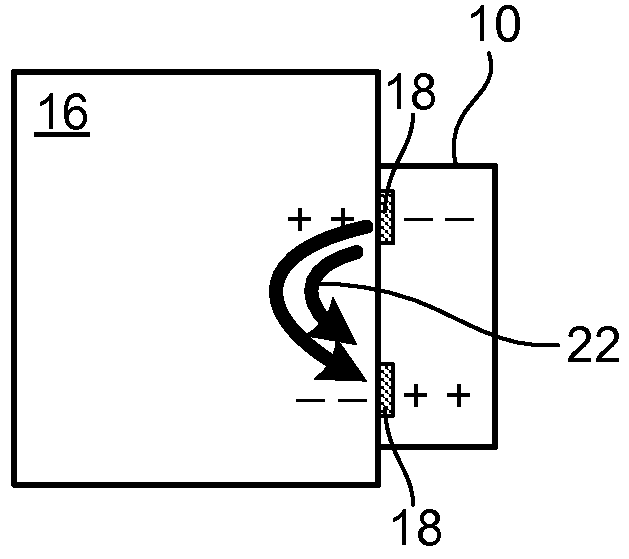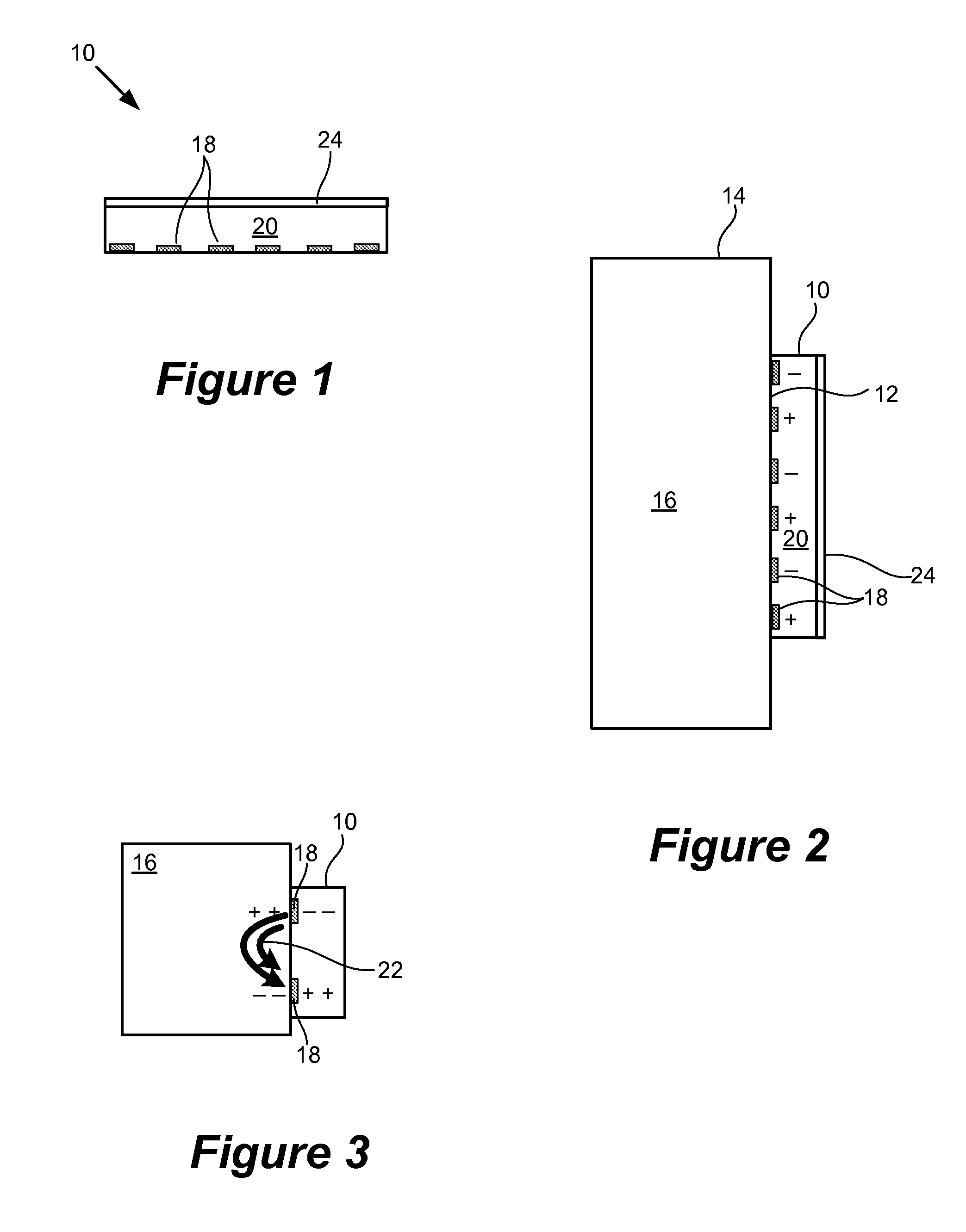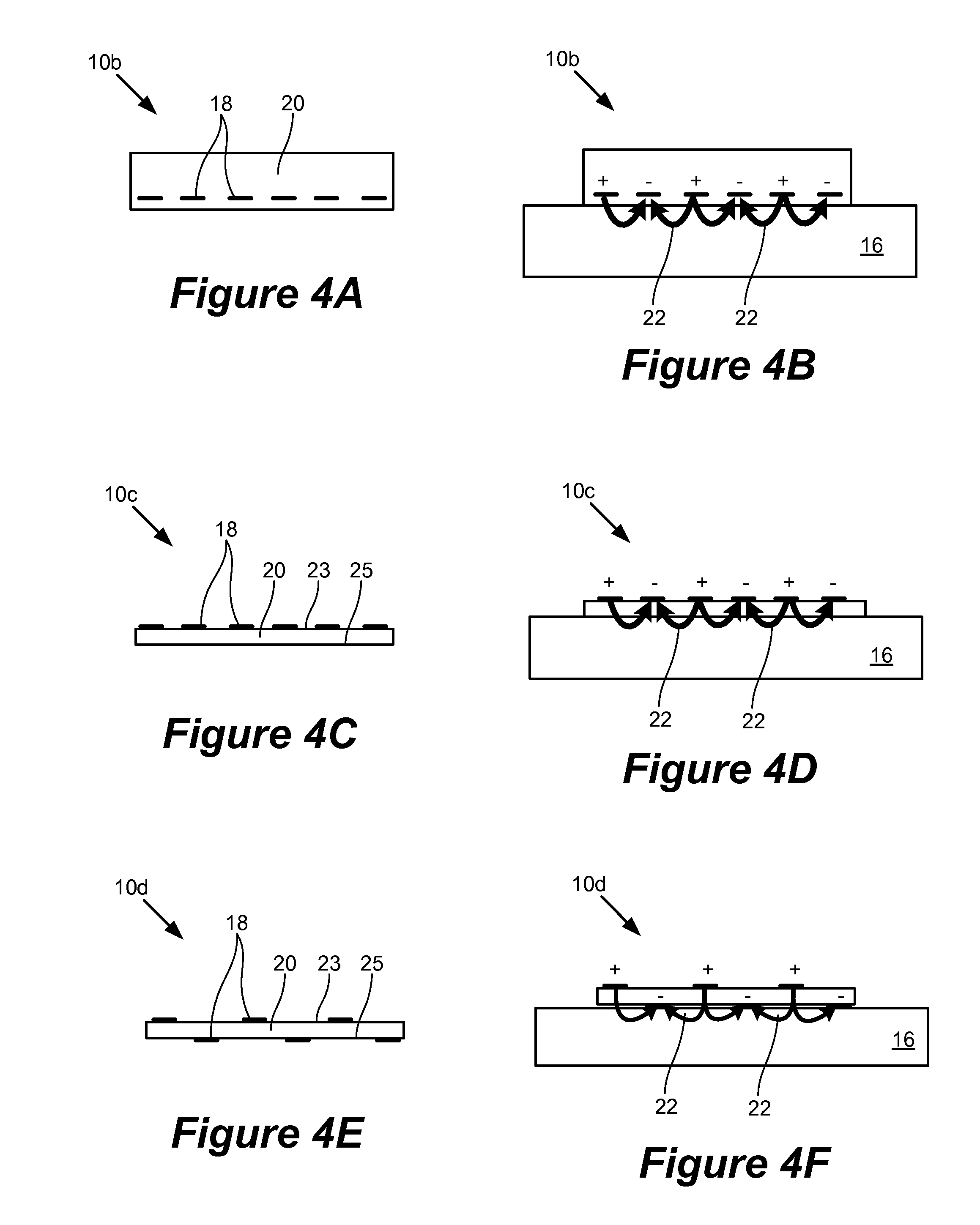Electroadhesion
a technology of electrical conductivity and electrodes, applied in the field of electrical conductivity, can solve the problems of unmet technological needs for controlled adhesion, high energy consumption of adhesive clamping technologies, and inability to provide the full range of capabilities of controlled adhesion, so as to achieve controllable adhesion, increase traction, and increase traction
- Summary
- Abstract
- Description
- Claims
- Application Information
AI Technical Summary
Benefits of technology
Problems solved by technology
Method used
Image
Examples
Embodiment Construction
[0049]The present invention is described in detail with reference to a few preferred embodiments as illustrated in the accompanying drawings. In the following description, numerous specific details are set forth in order to provide a thorough understanding of the present invention. It will be apparent, however, to one skilled in the art, that the present invention may be practiced without some or all of these specific details. In other instances, well known process steps and / or structures have not been described in detail in order to not unnecessarily obscure the present invention.
Electrically Controlled Adhesion
[0050]As the term is used herein, ‘electroadhesion’ refers to the mechanical coupling of two objects using electrostatic forces. Electroadhesion as described herein uses electrical control of these electrostatic forces to permit temporary and detachable attachment between two objects. This electrostatic adhesion holds two surfaces of these objects together or increases the t...
PUM
 Login to View More
Login to View More Abstract
Description
Claims
Application Information
 Login to View More
Login to View More - R&D
- Intellectual Property
- Life Sciences
- Materials
- Tech Scout
- Unparalleled Data Quality
- Higher Quality Content
- 60% Fewer Hallucinations
Browse by: Latest US Patents, China's latest patents, Technical Efficacy Thesaurus, Application Domain, Technology Topic, Popular Technical Reports.
© 2025 PatSnap. All rights reserved.Legal|Privacy policy|Modern Slavery Act Transparency Statement|Sitemap|About US| Contact US: help@patsnap.com



